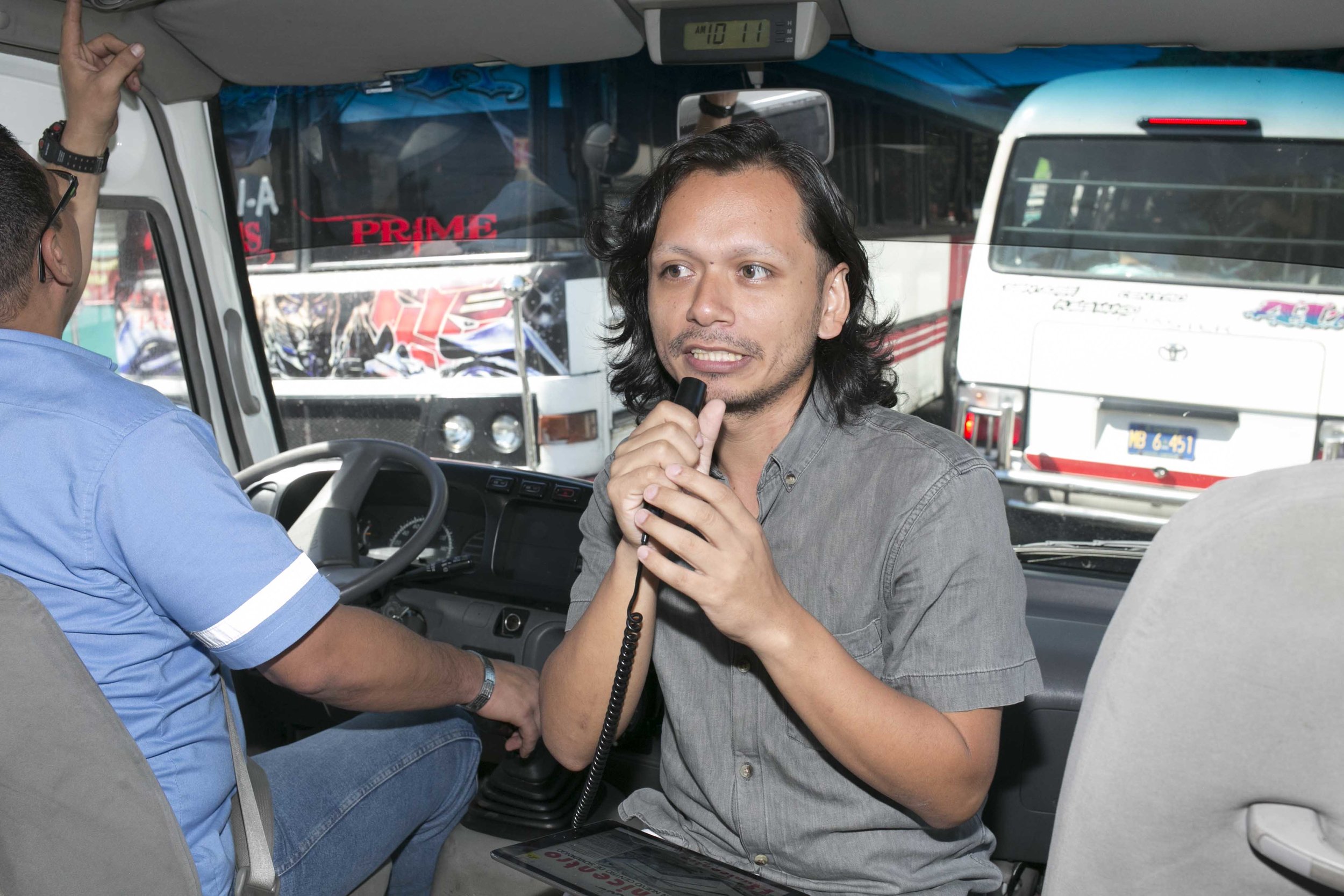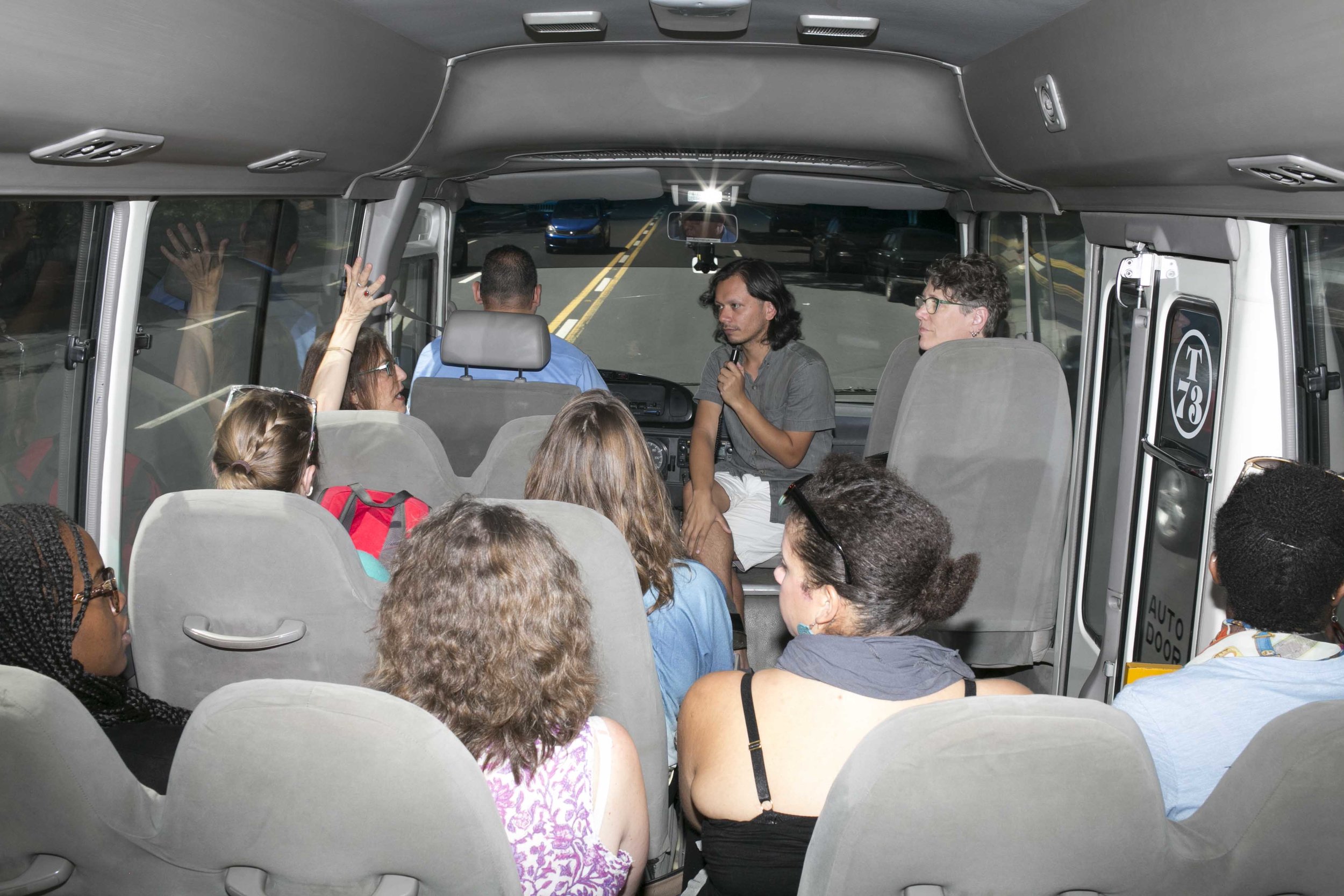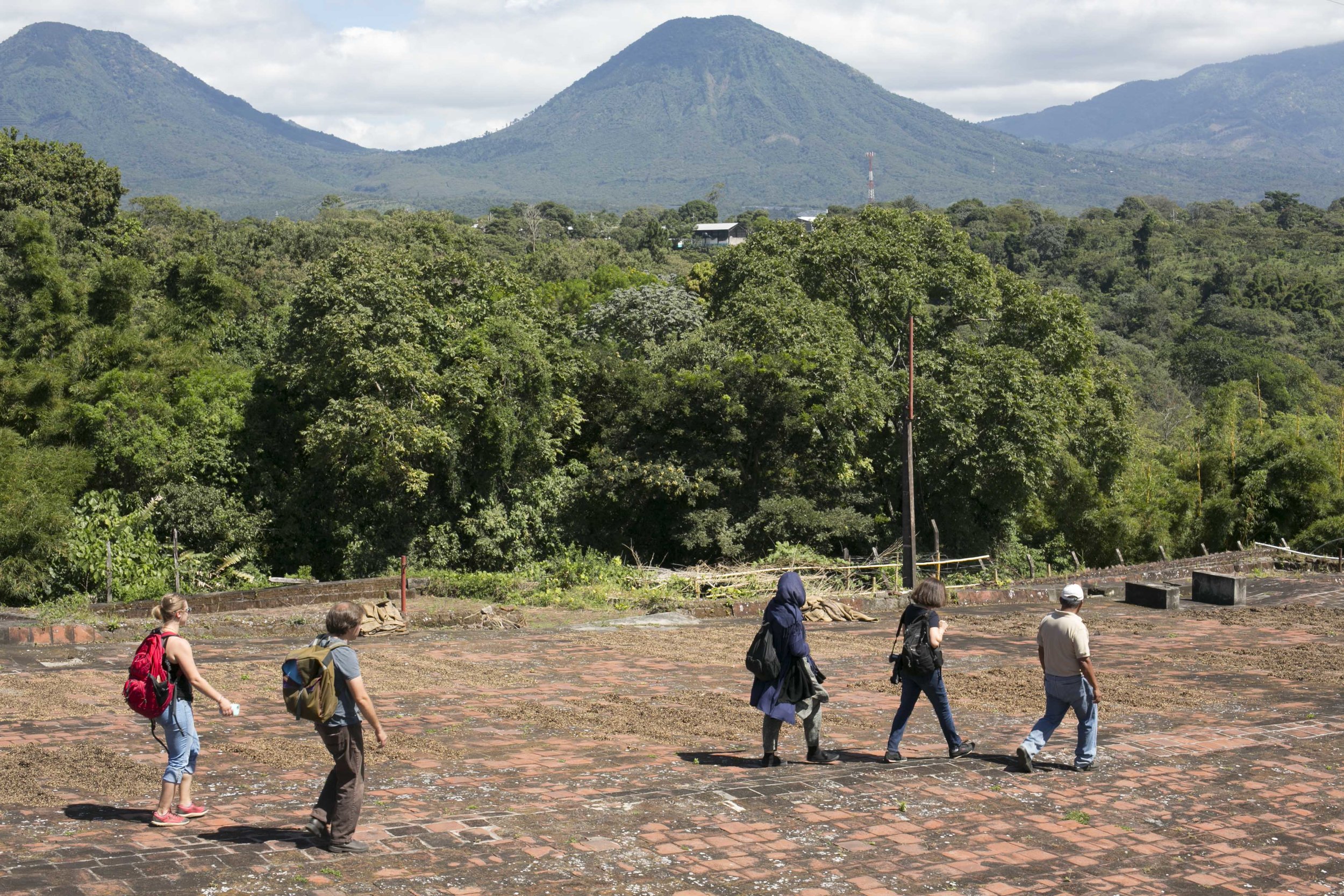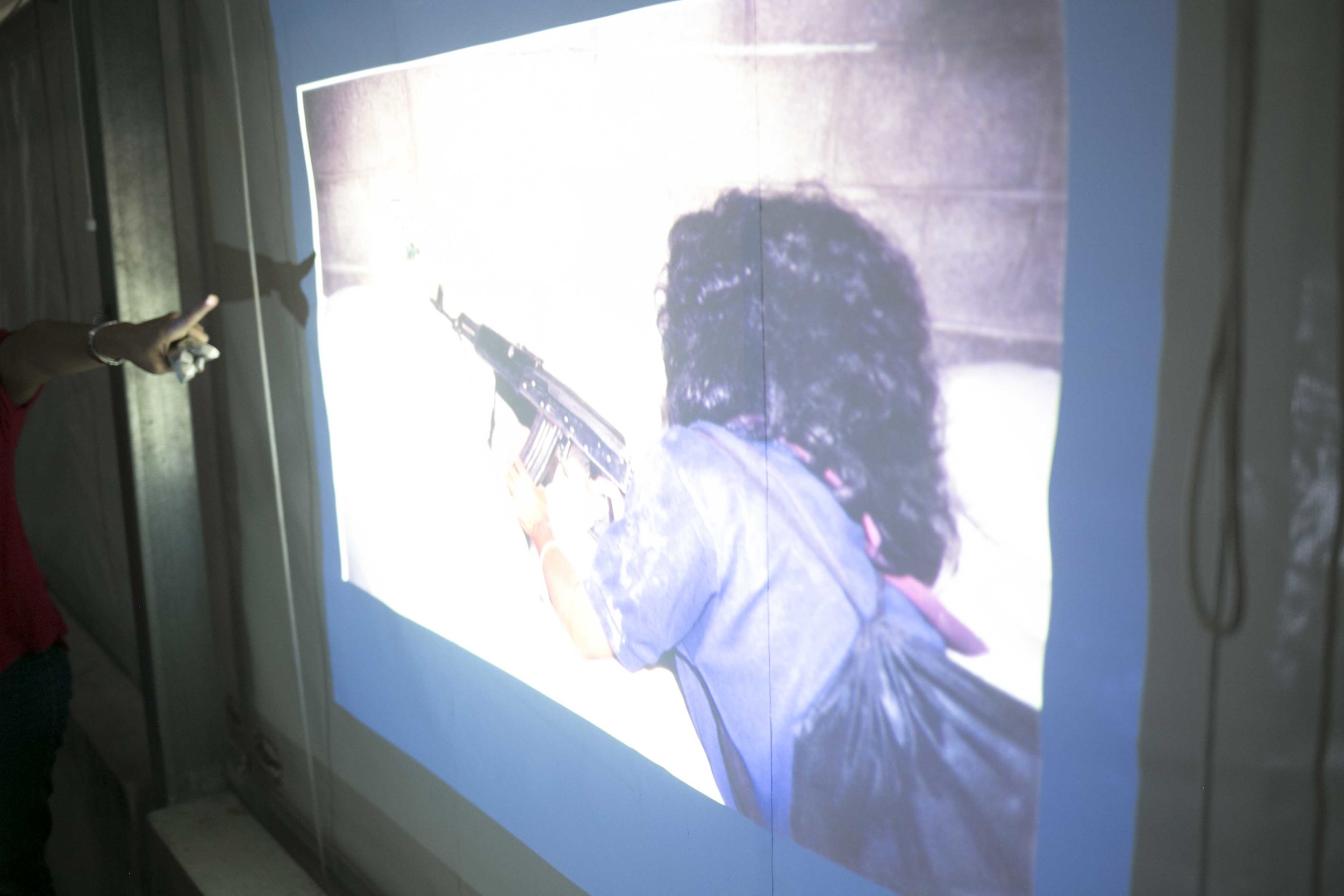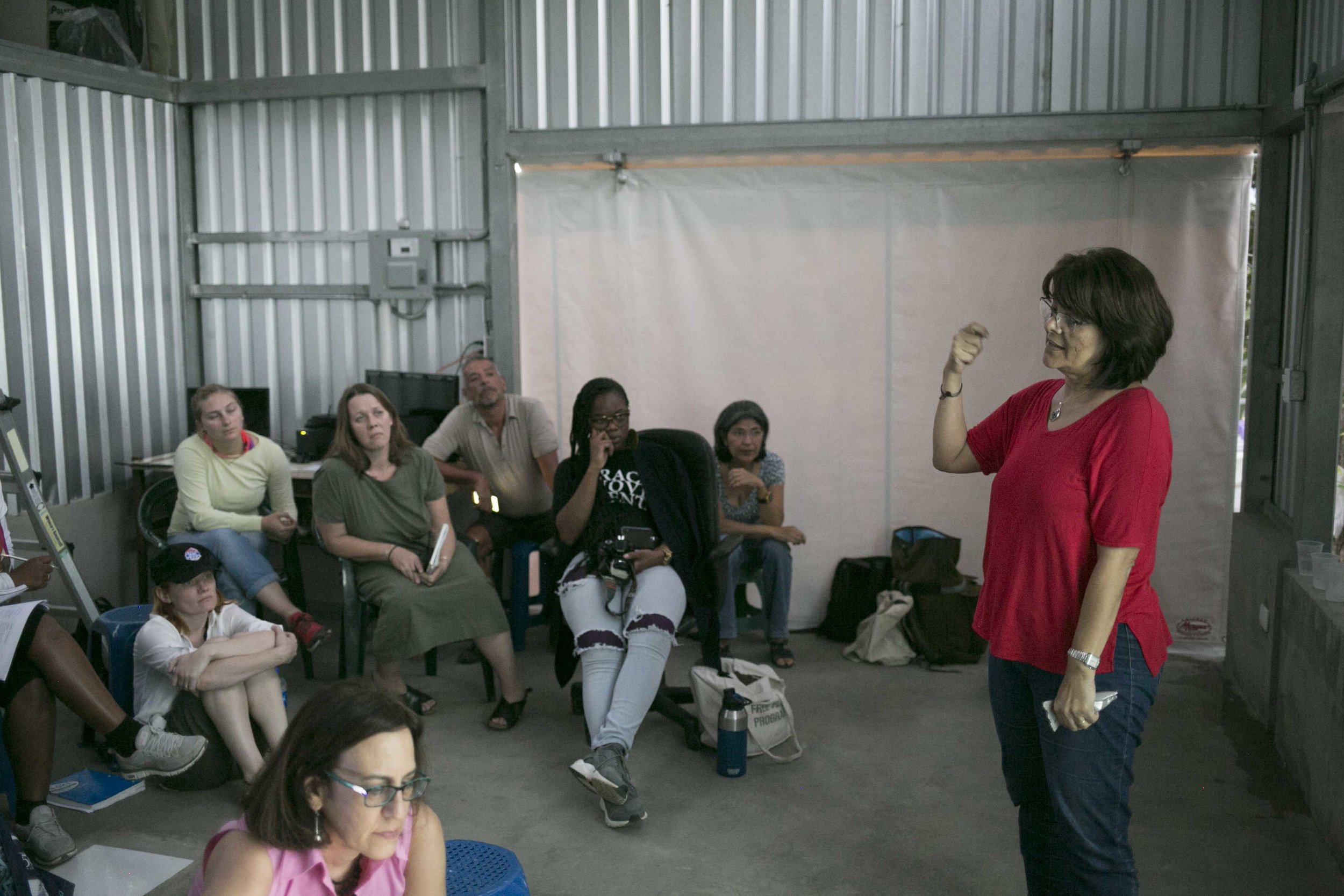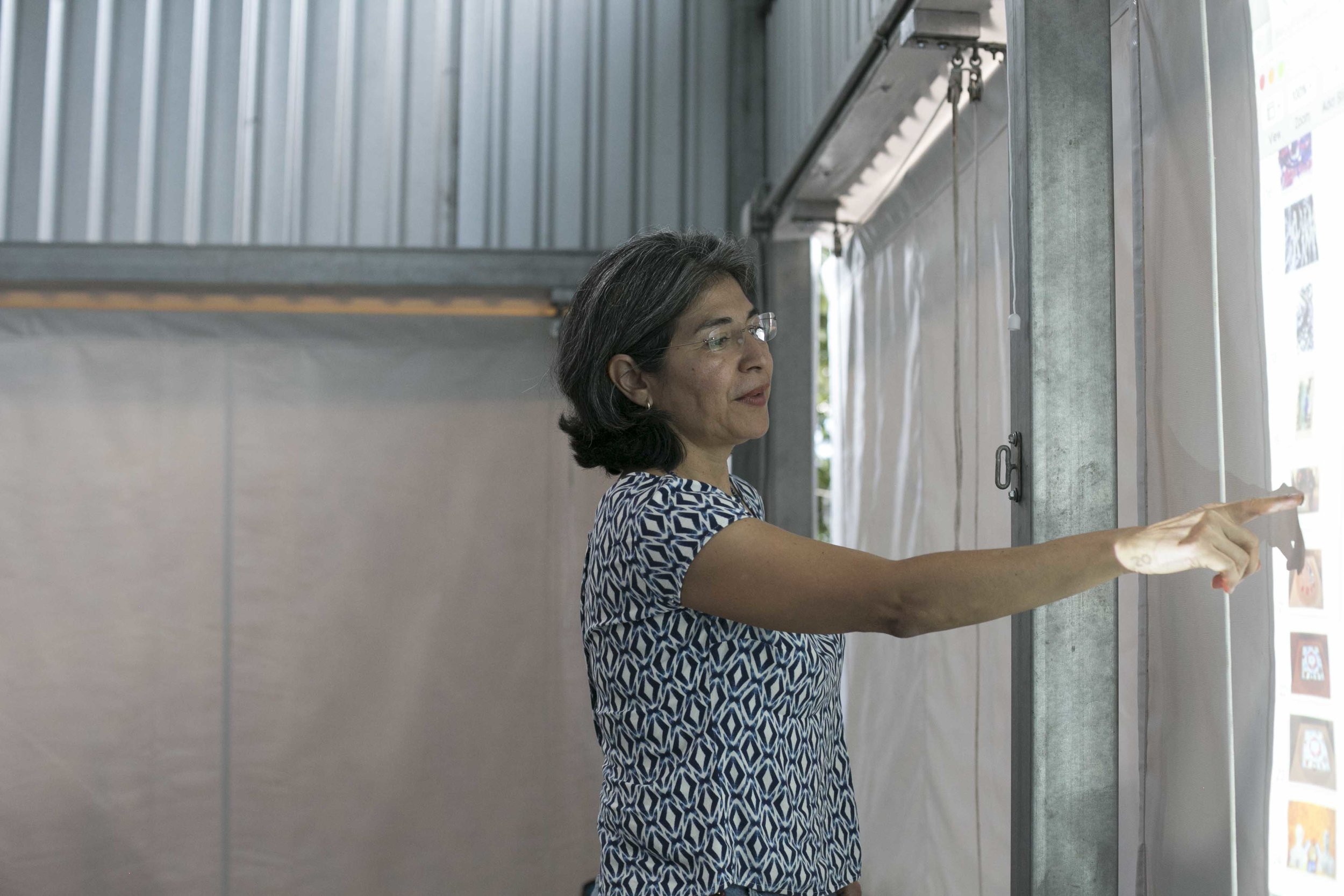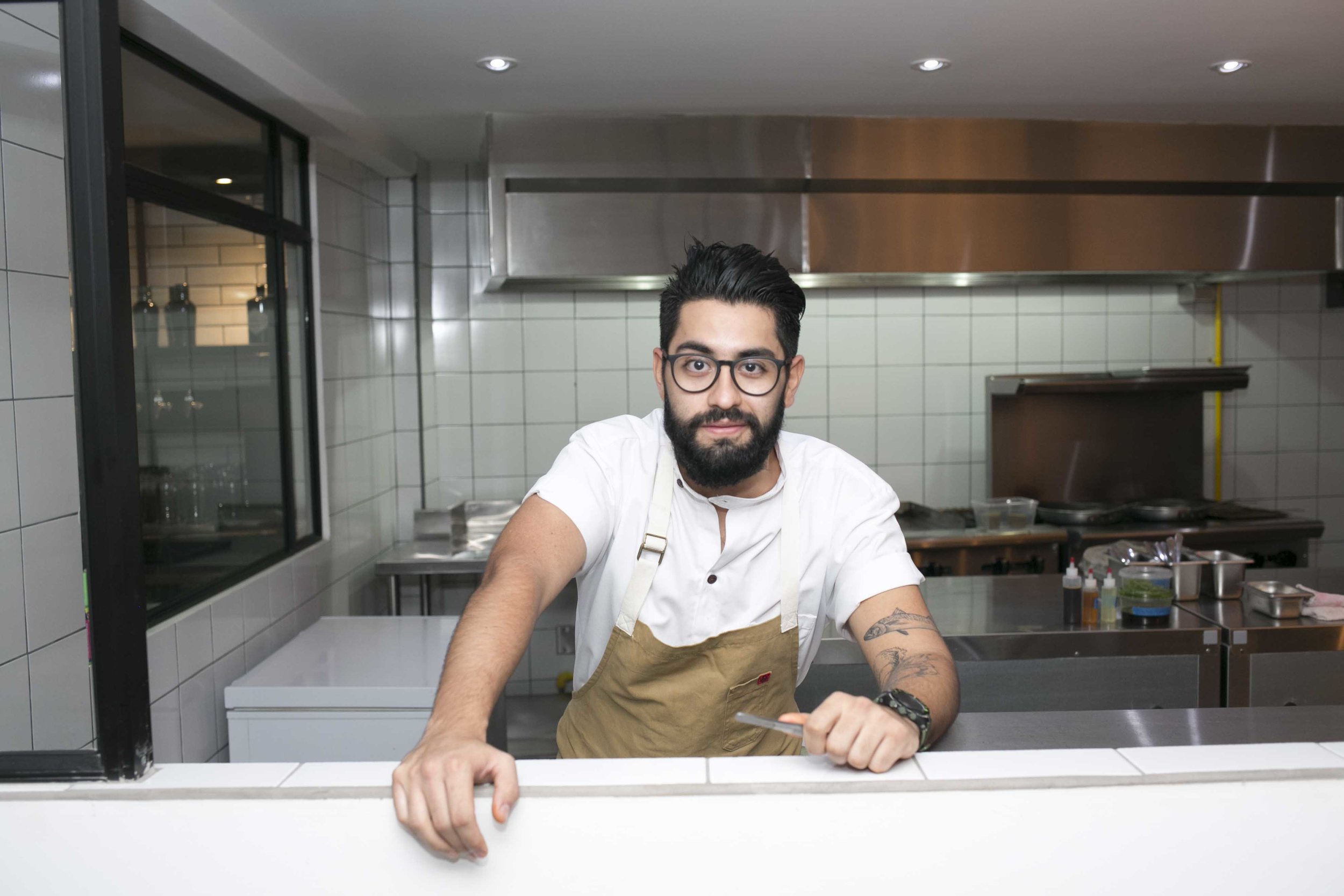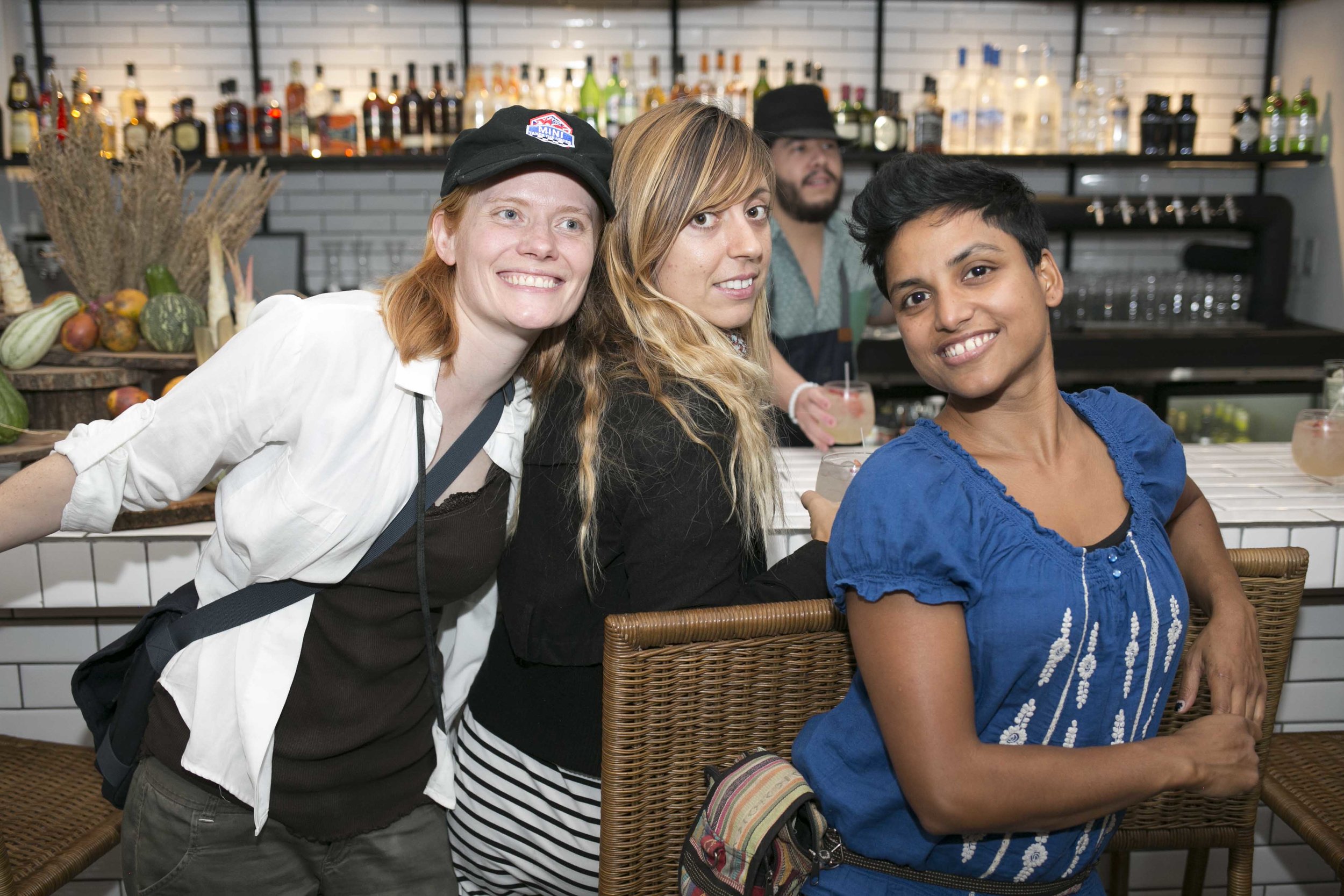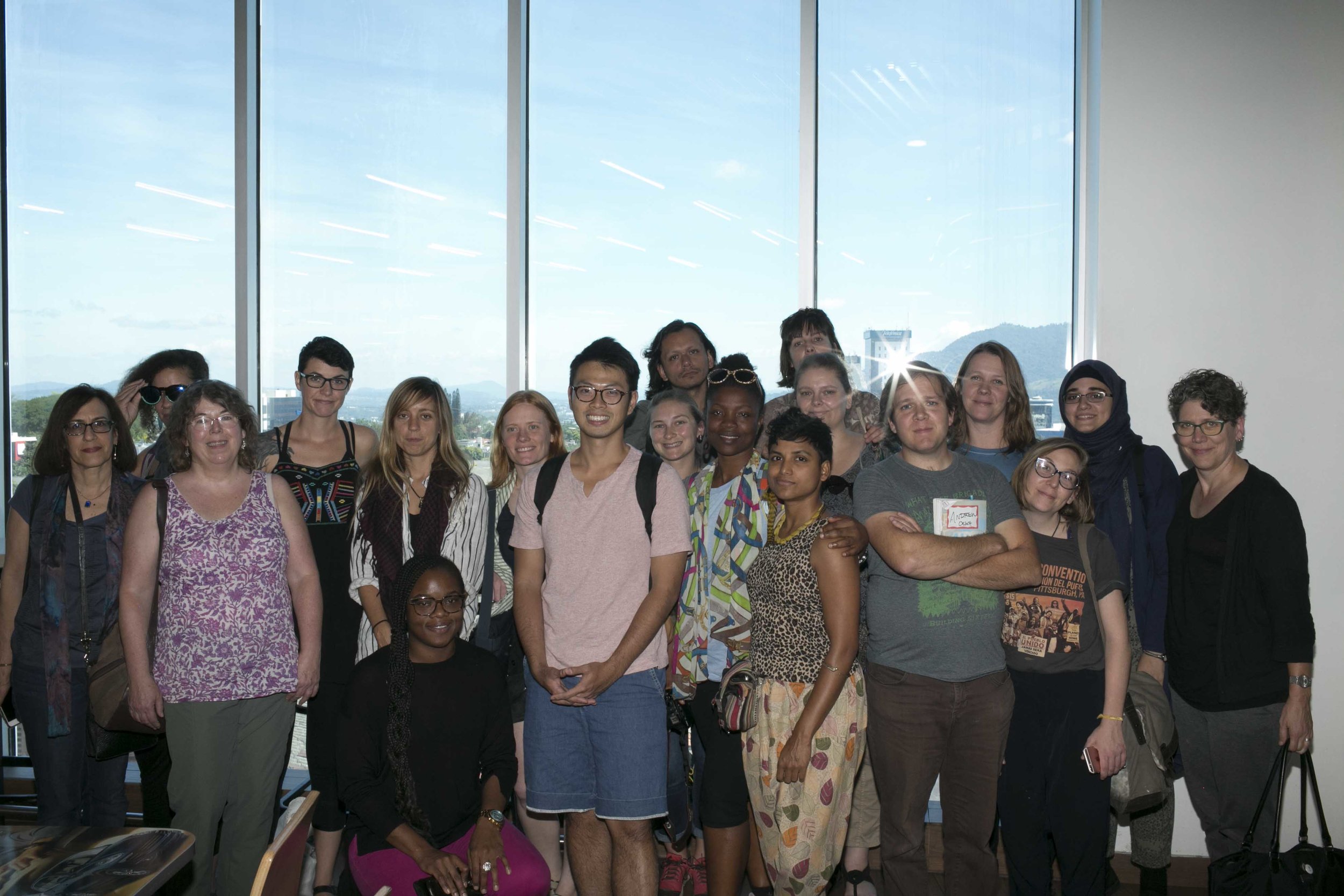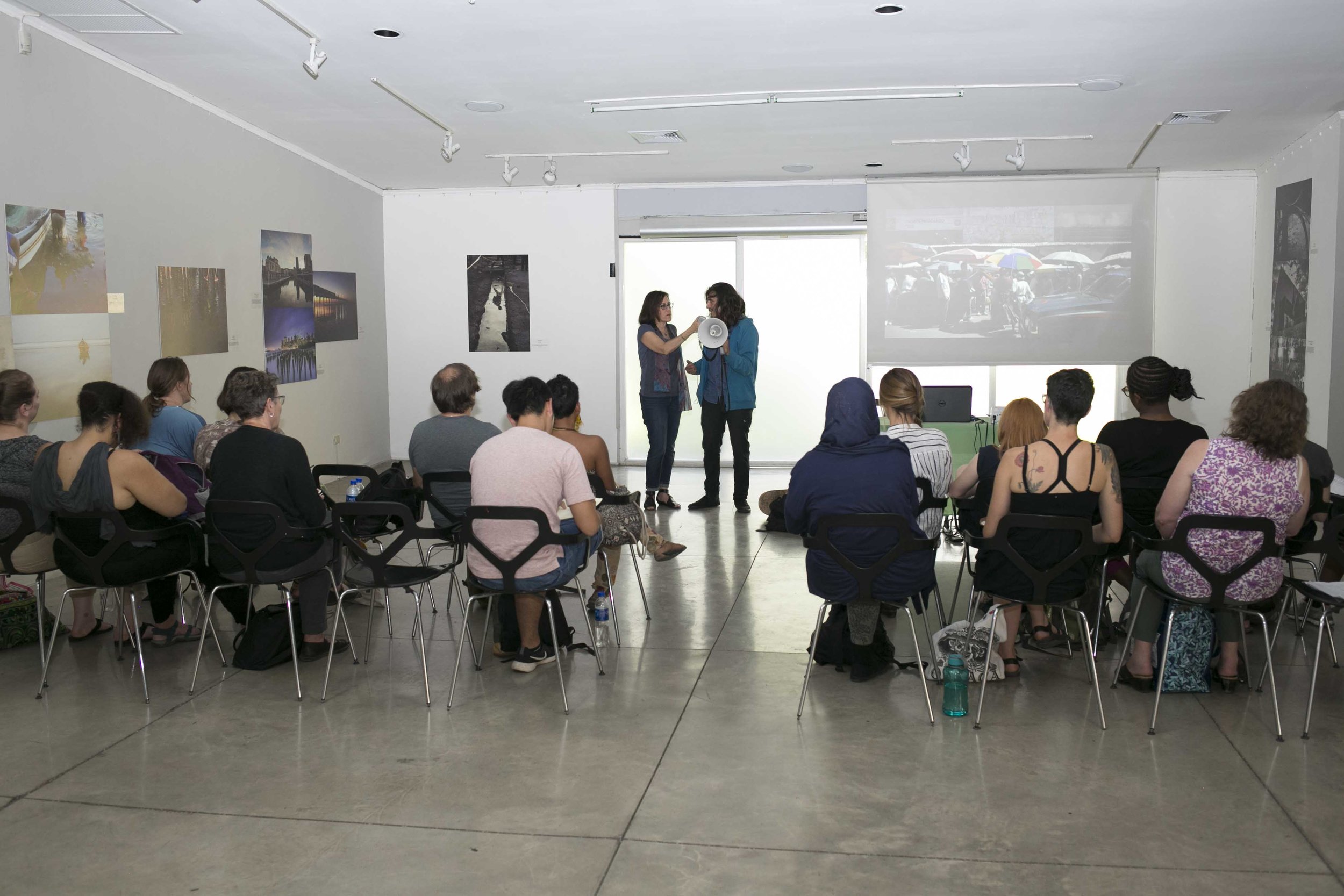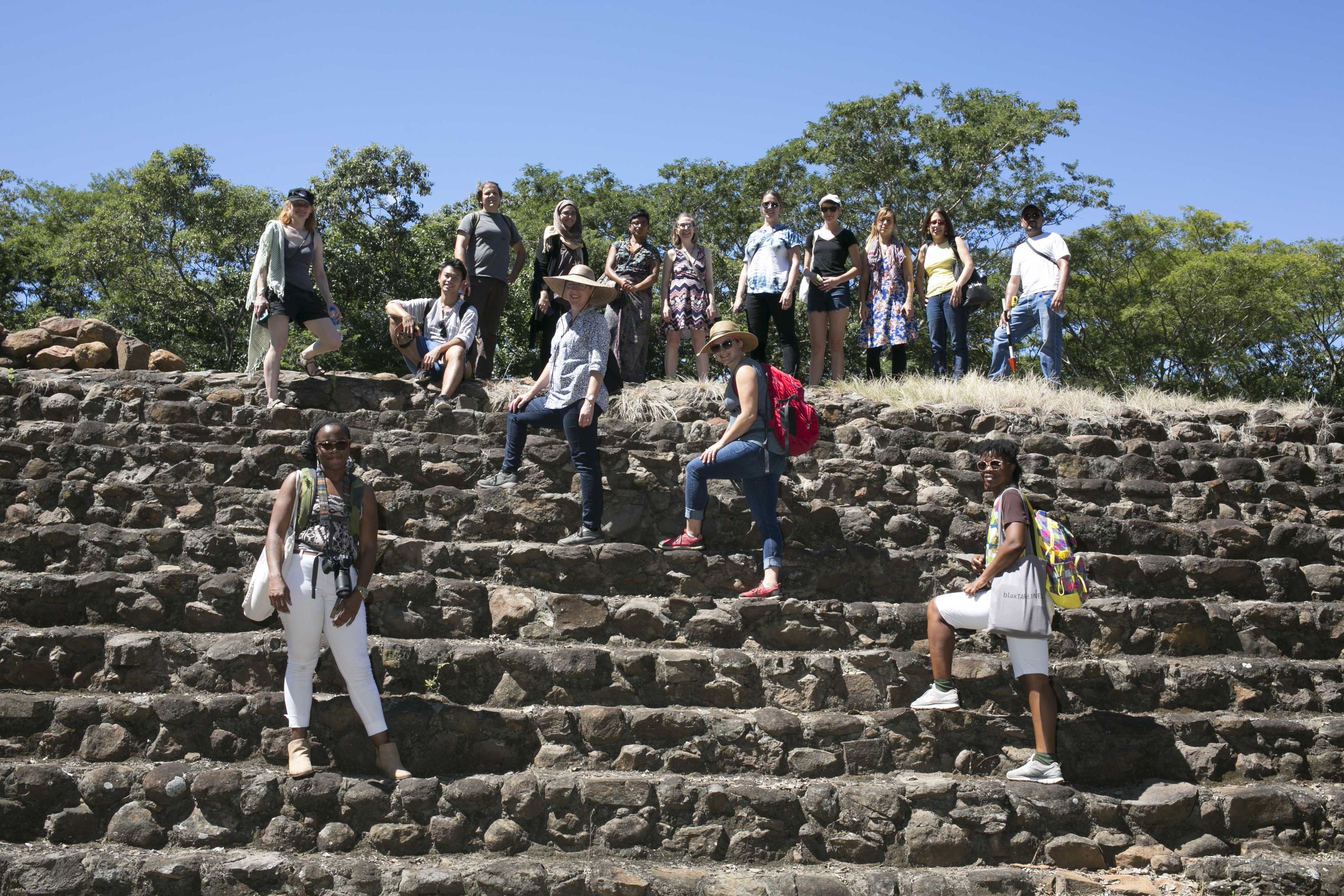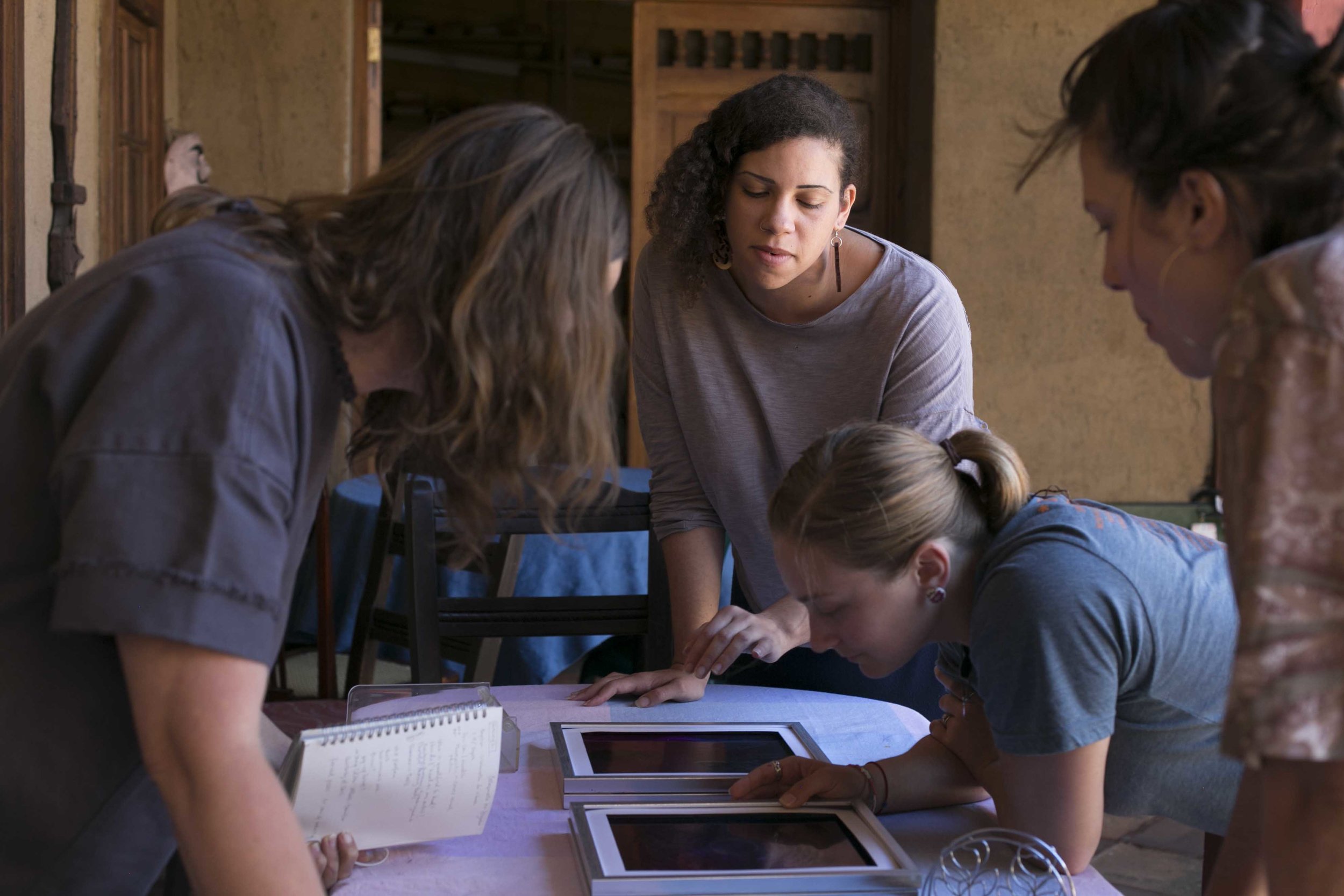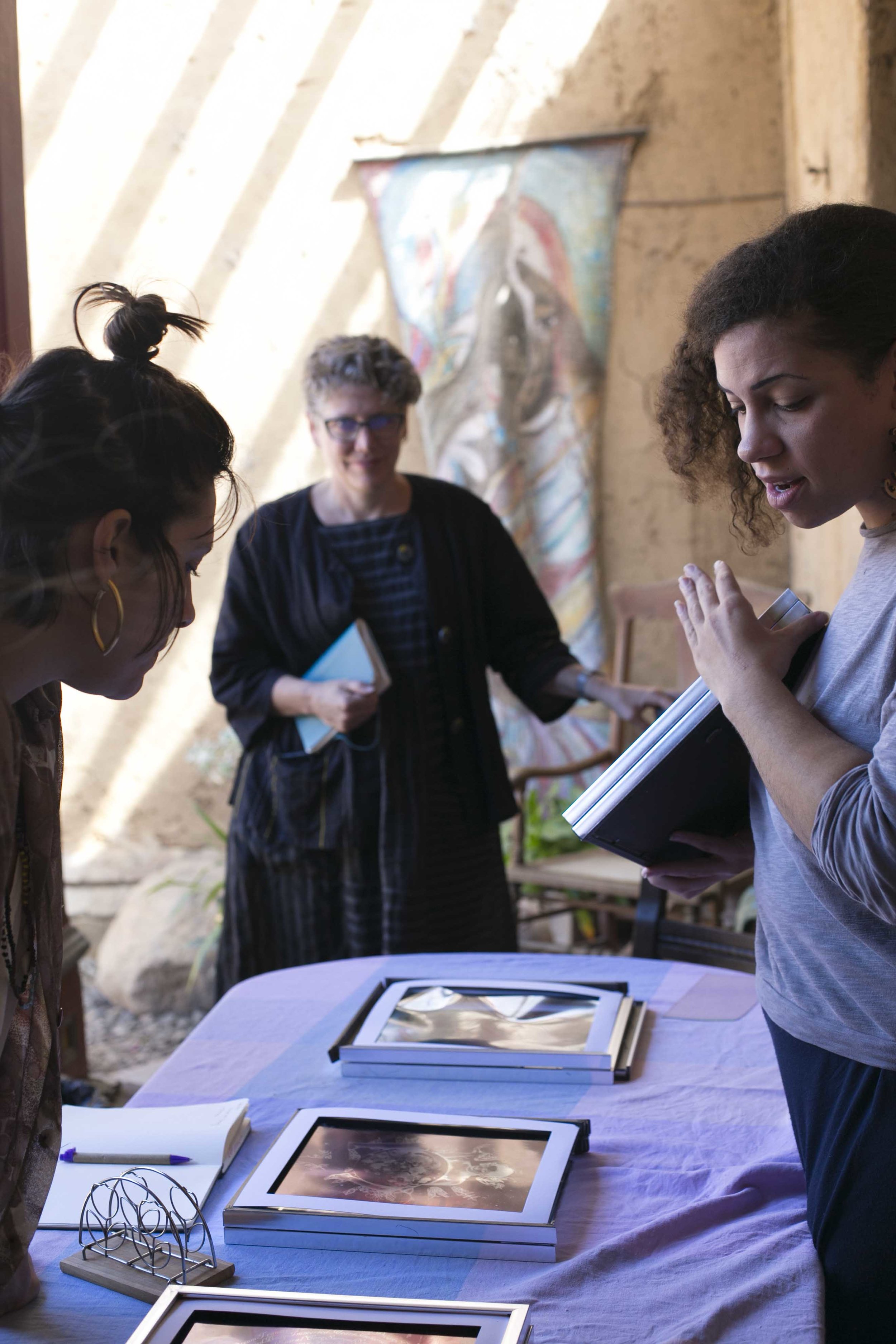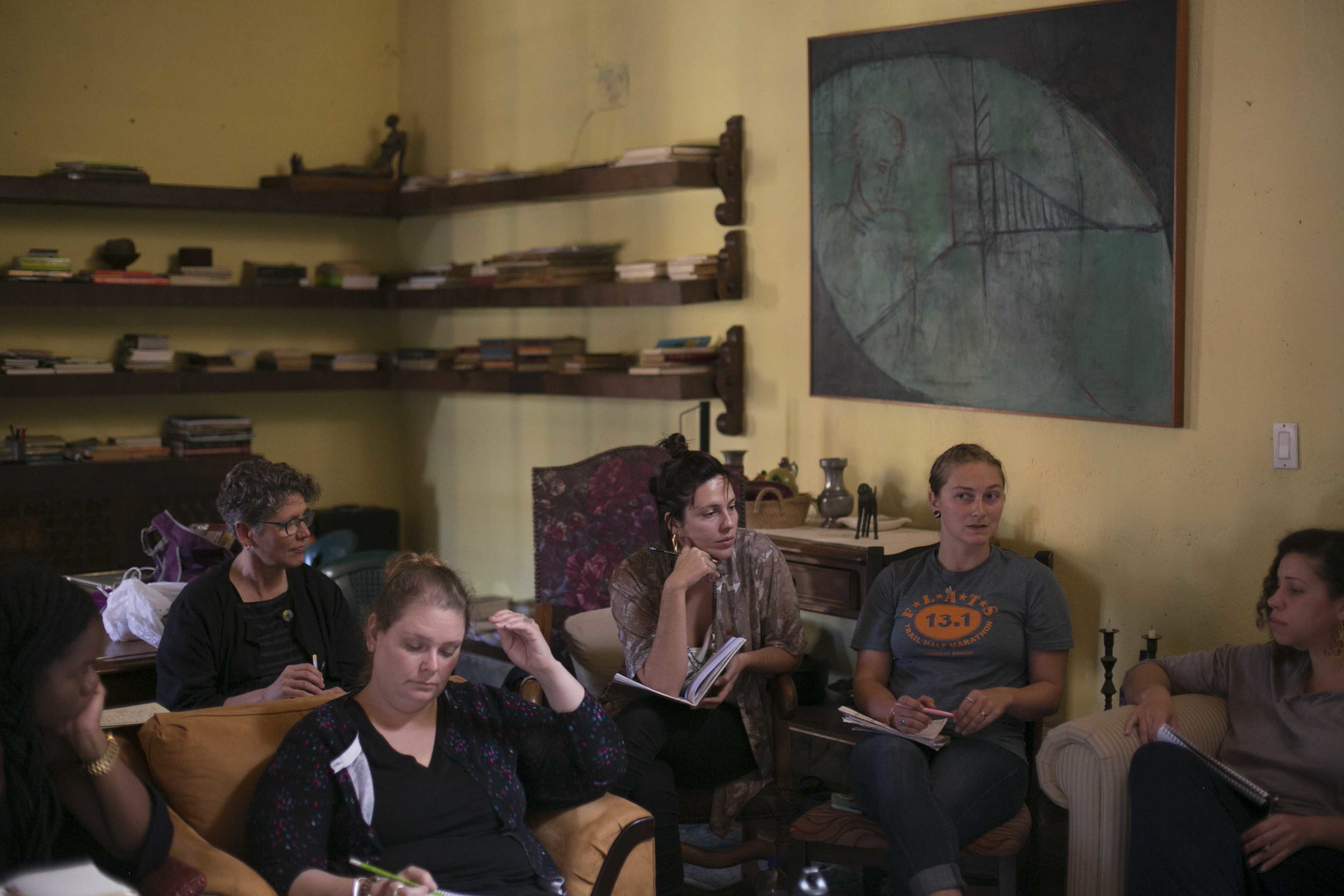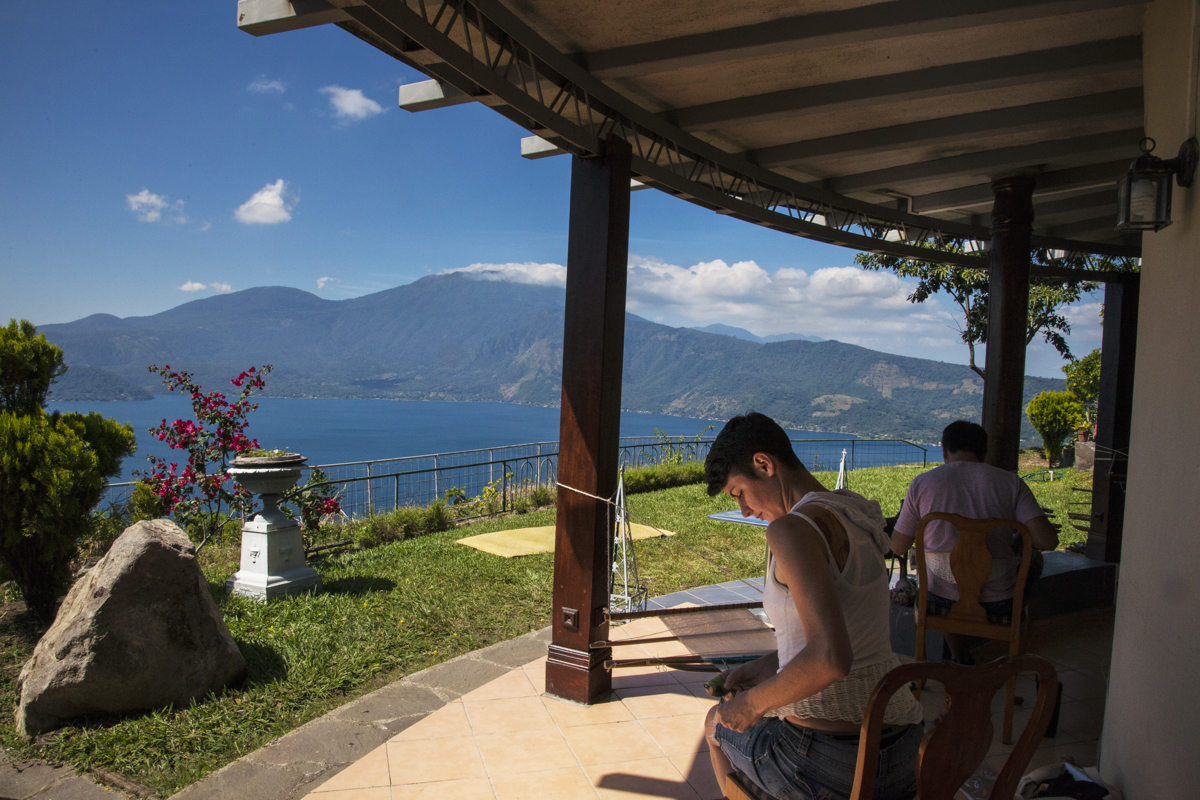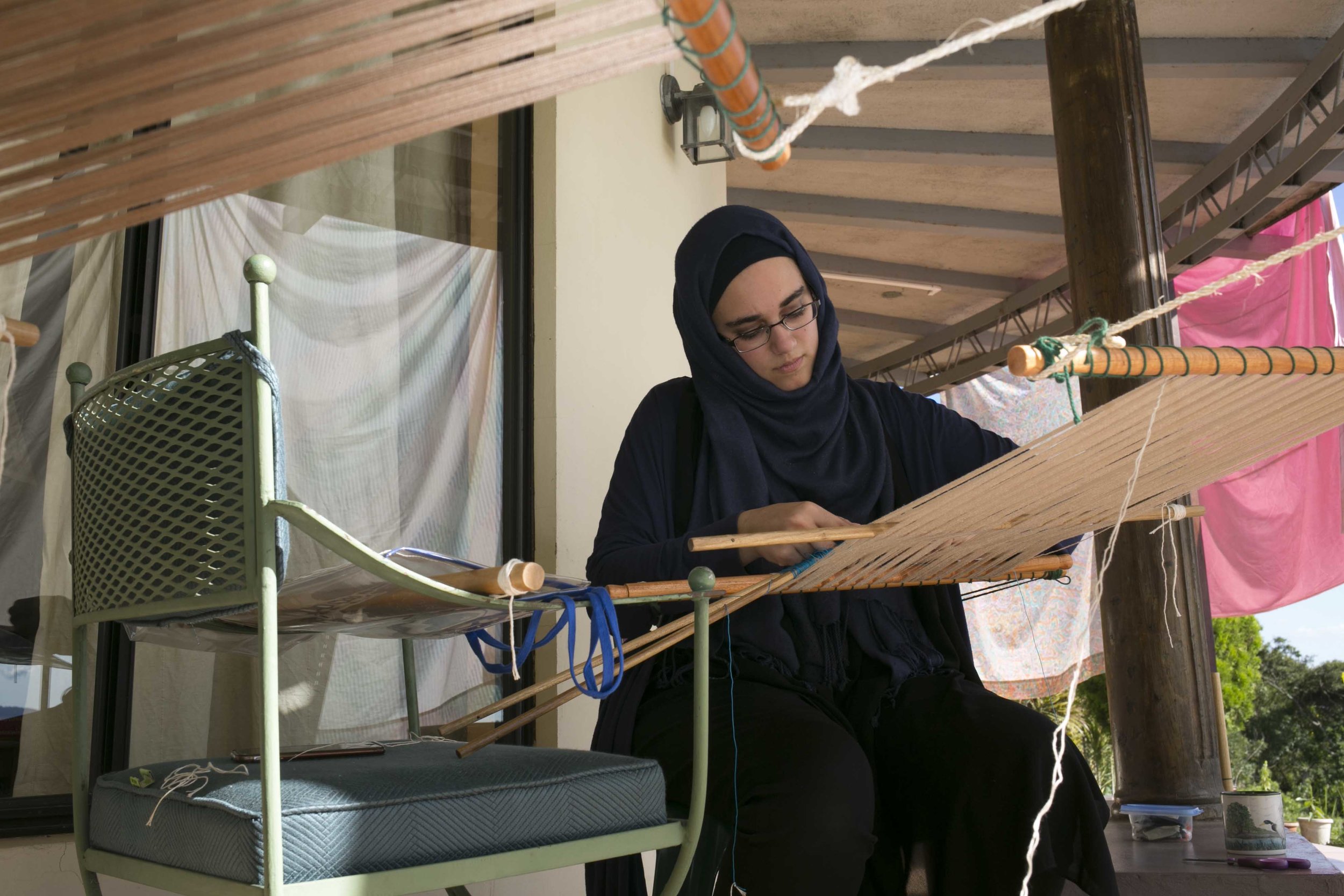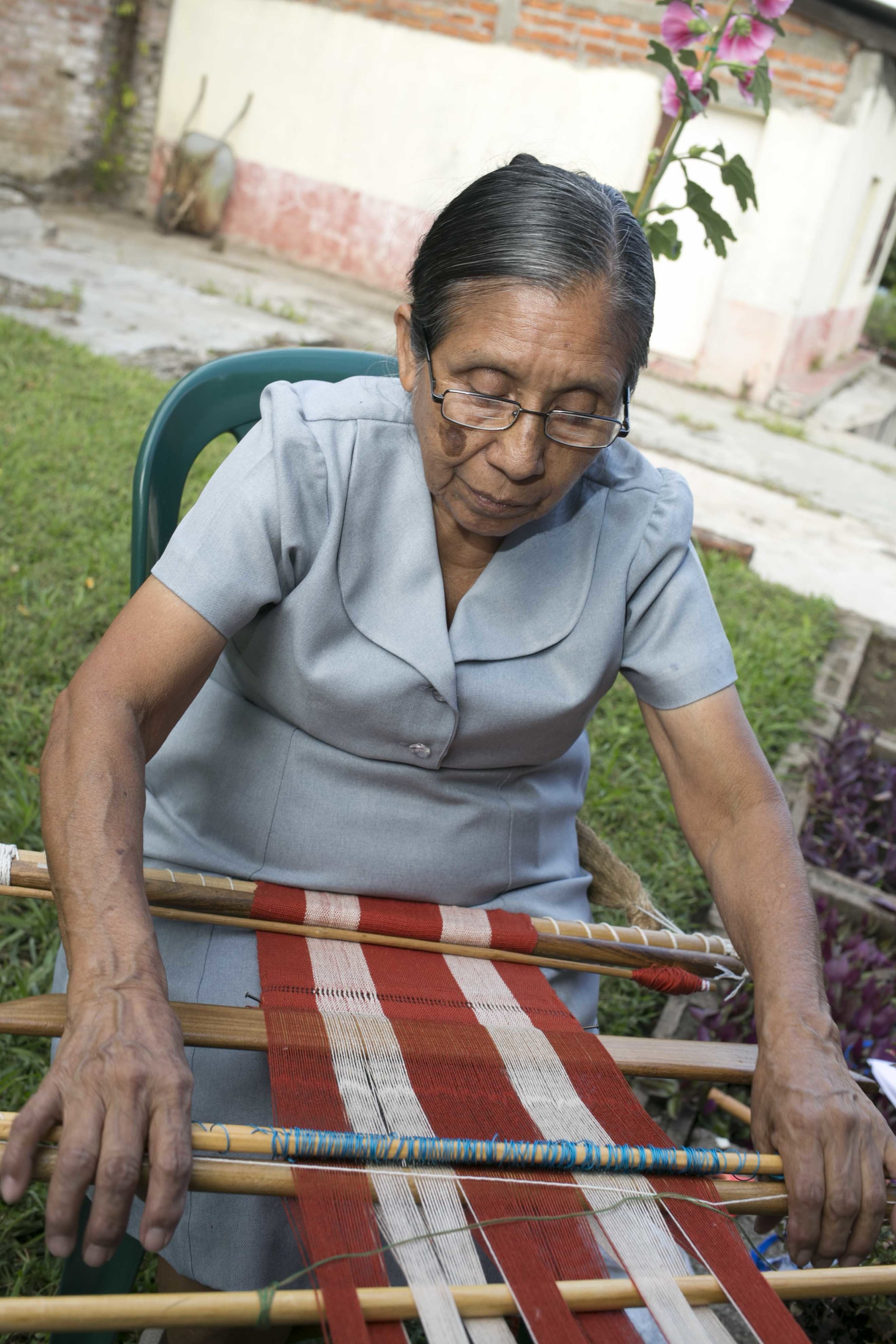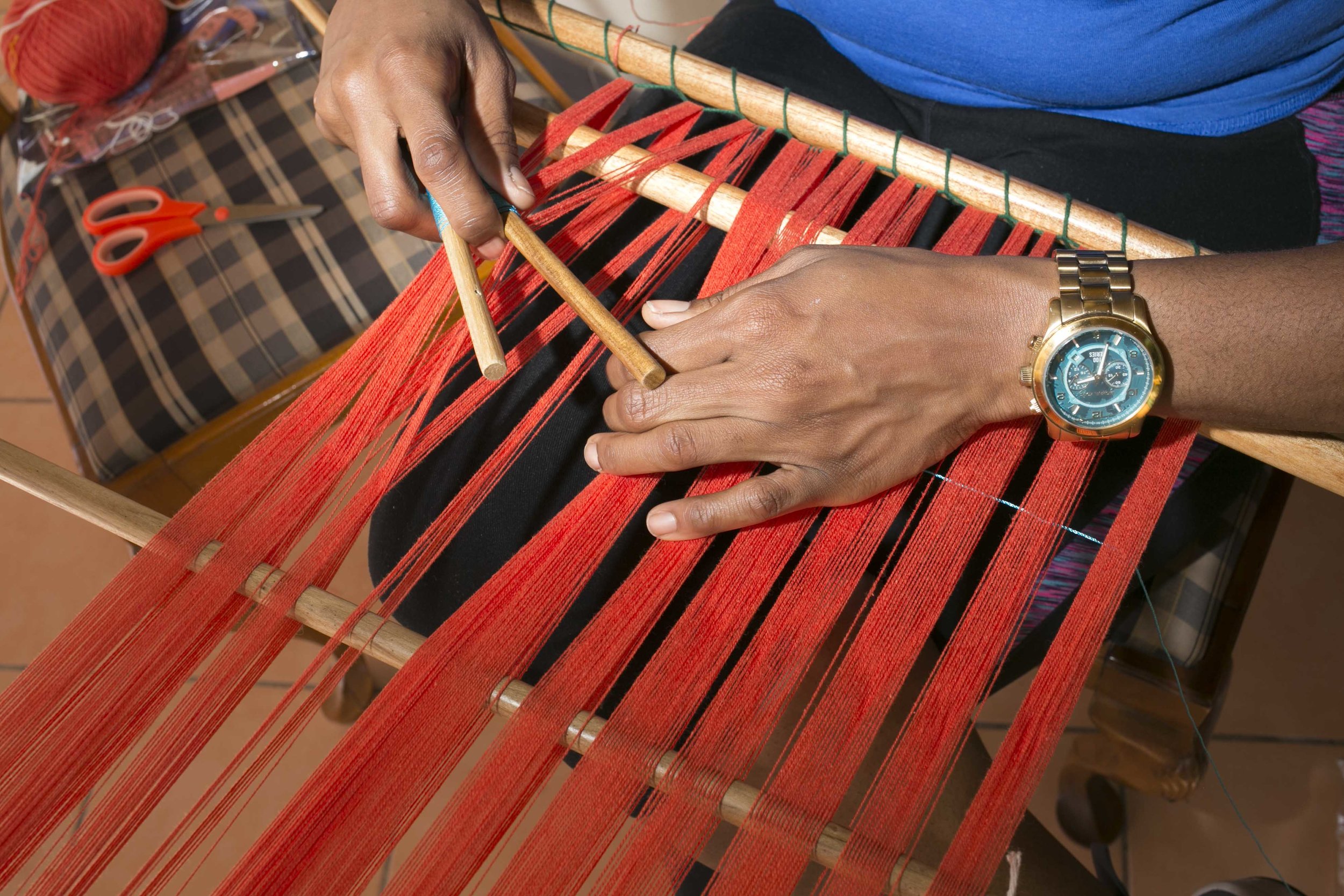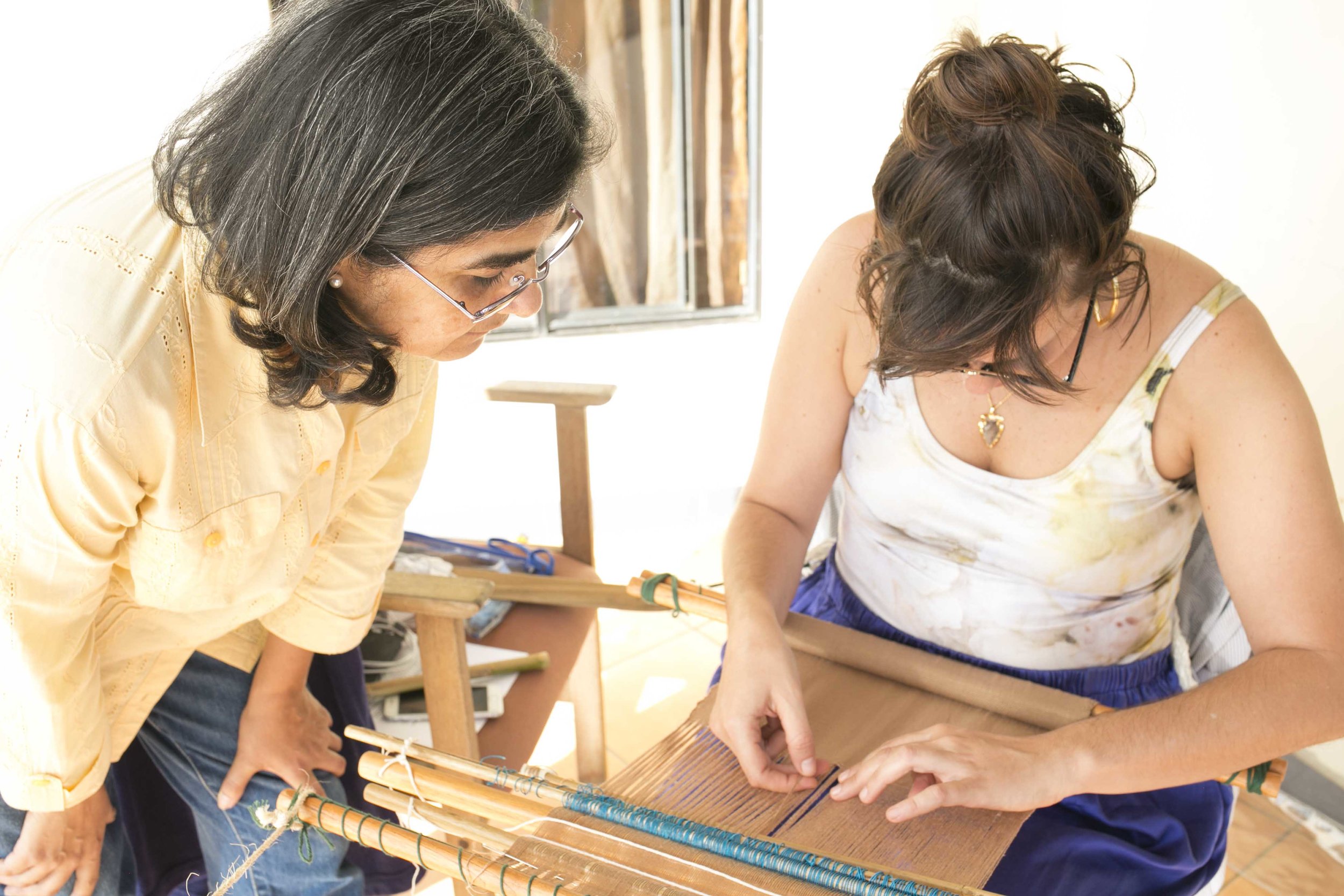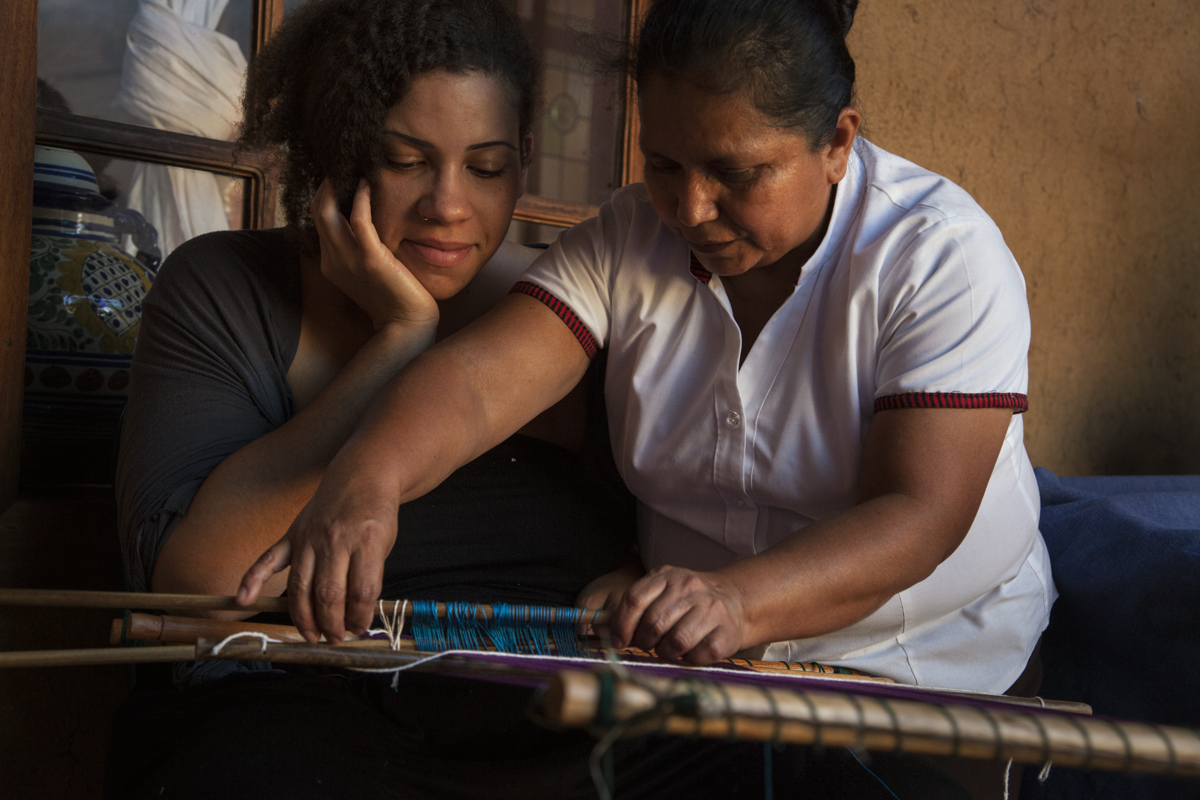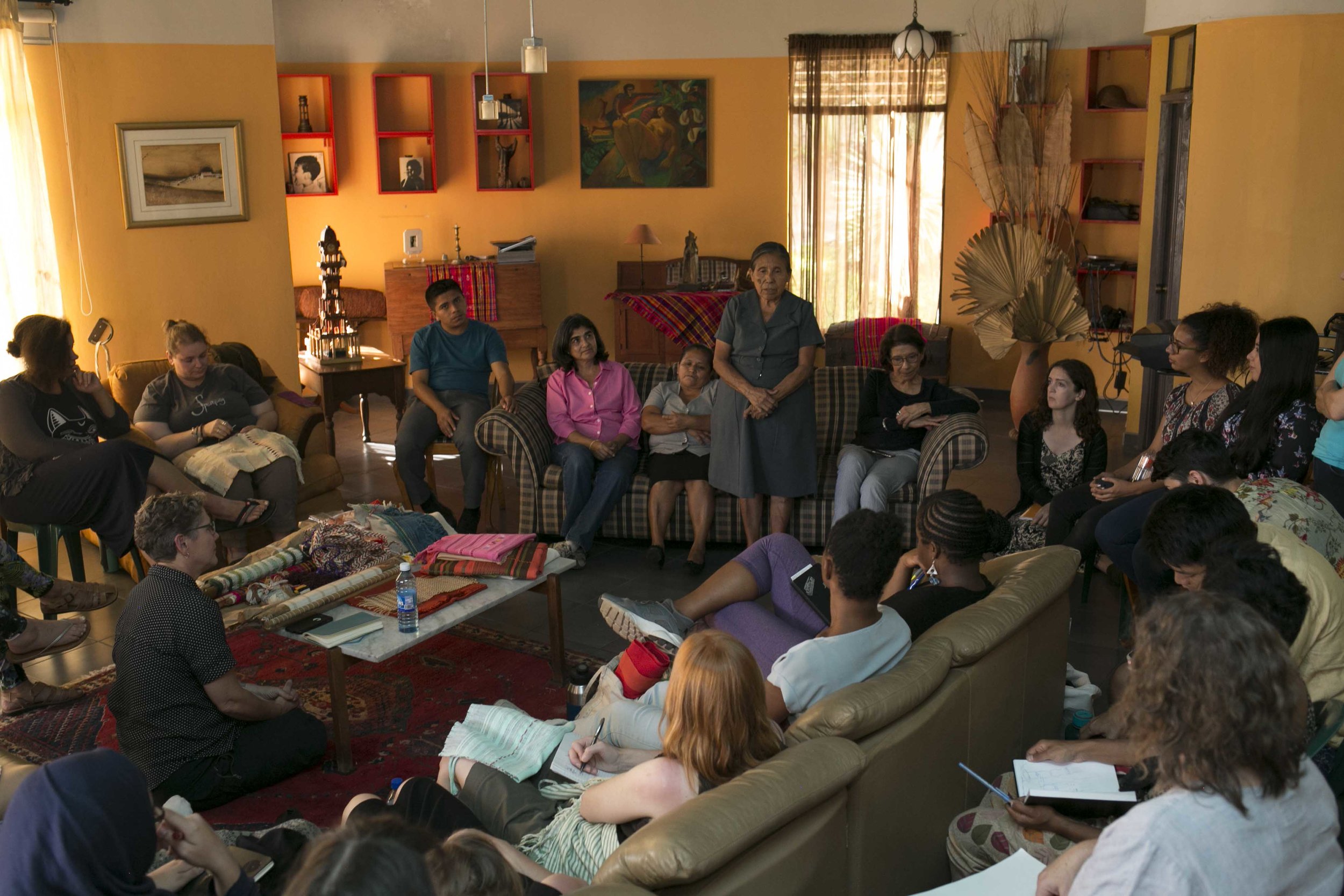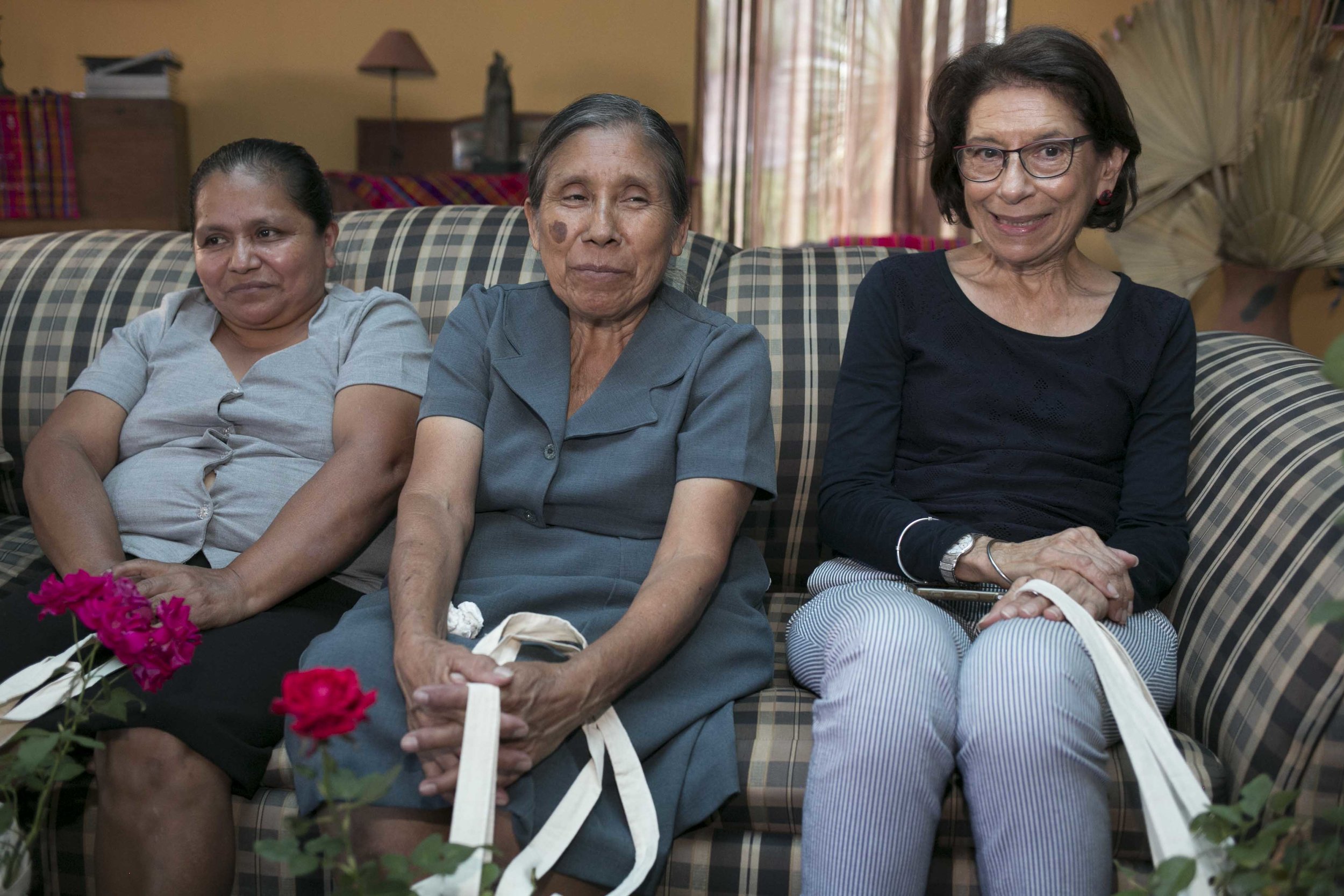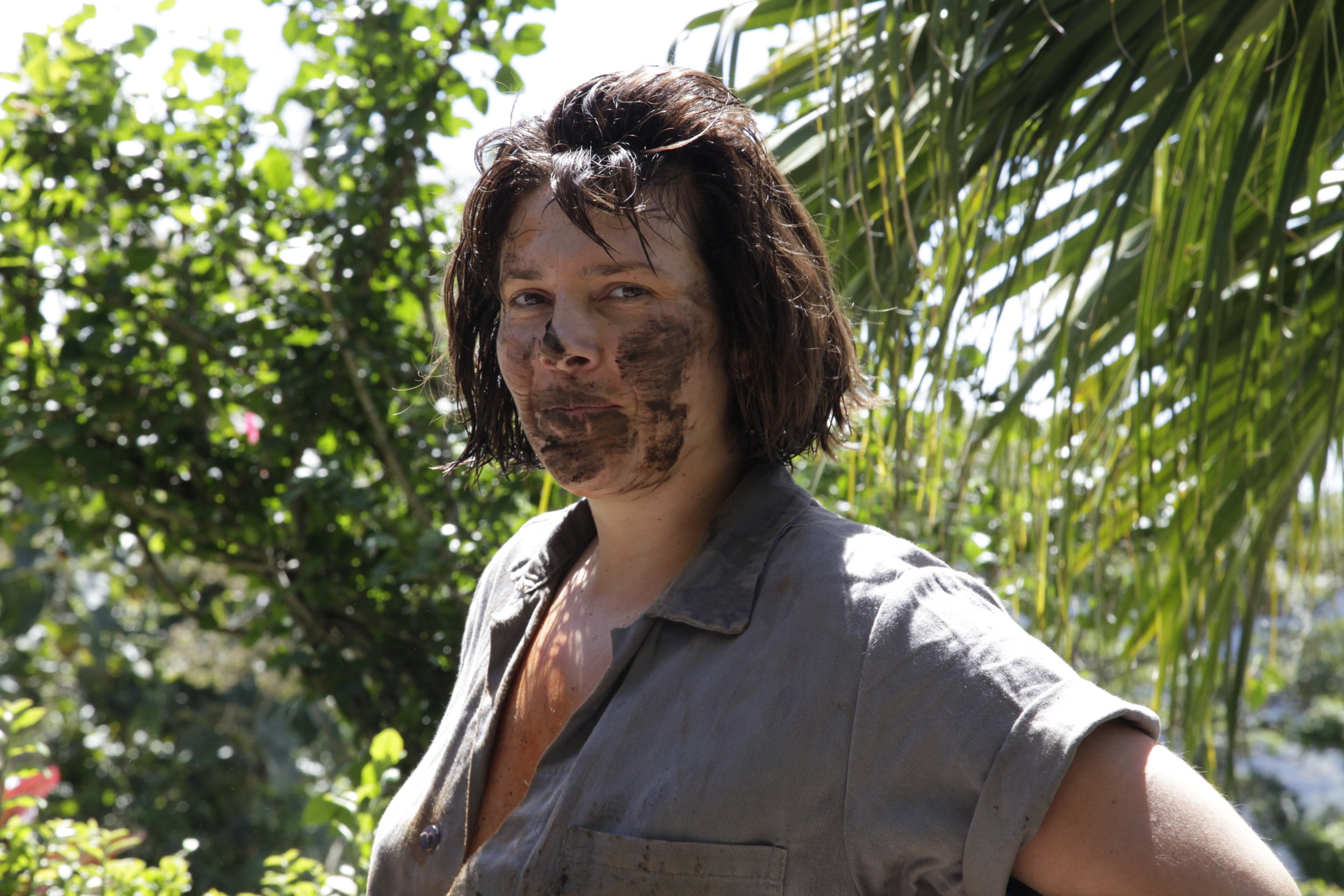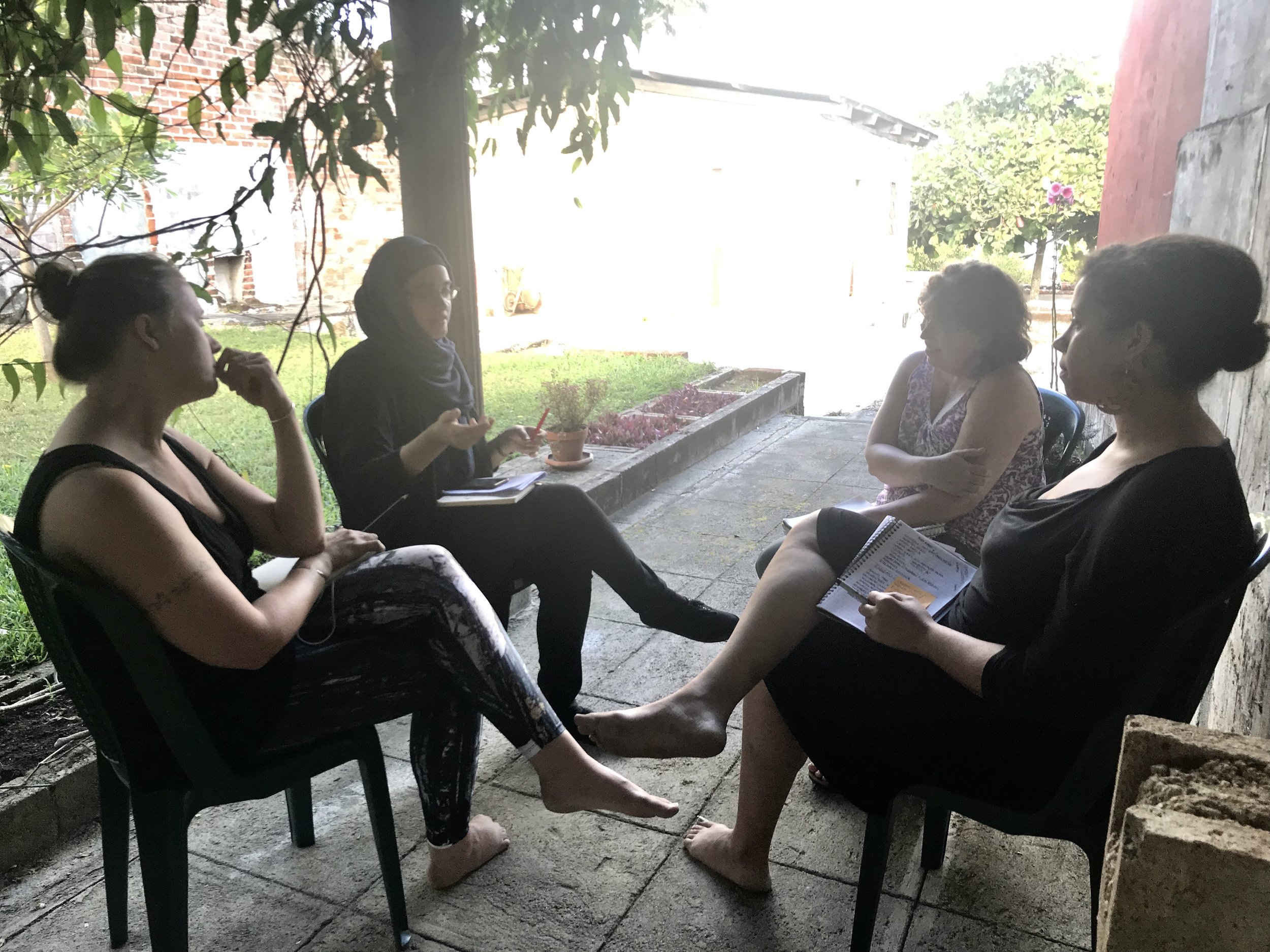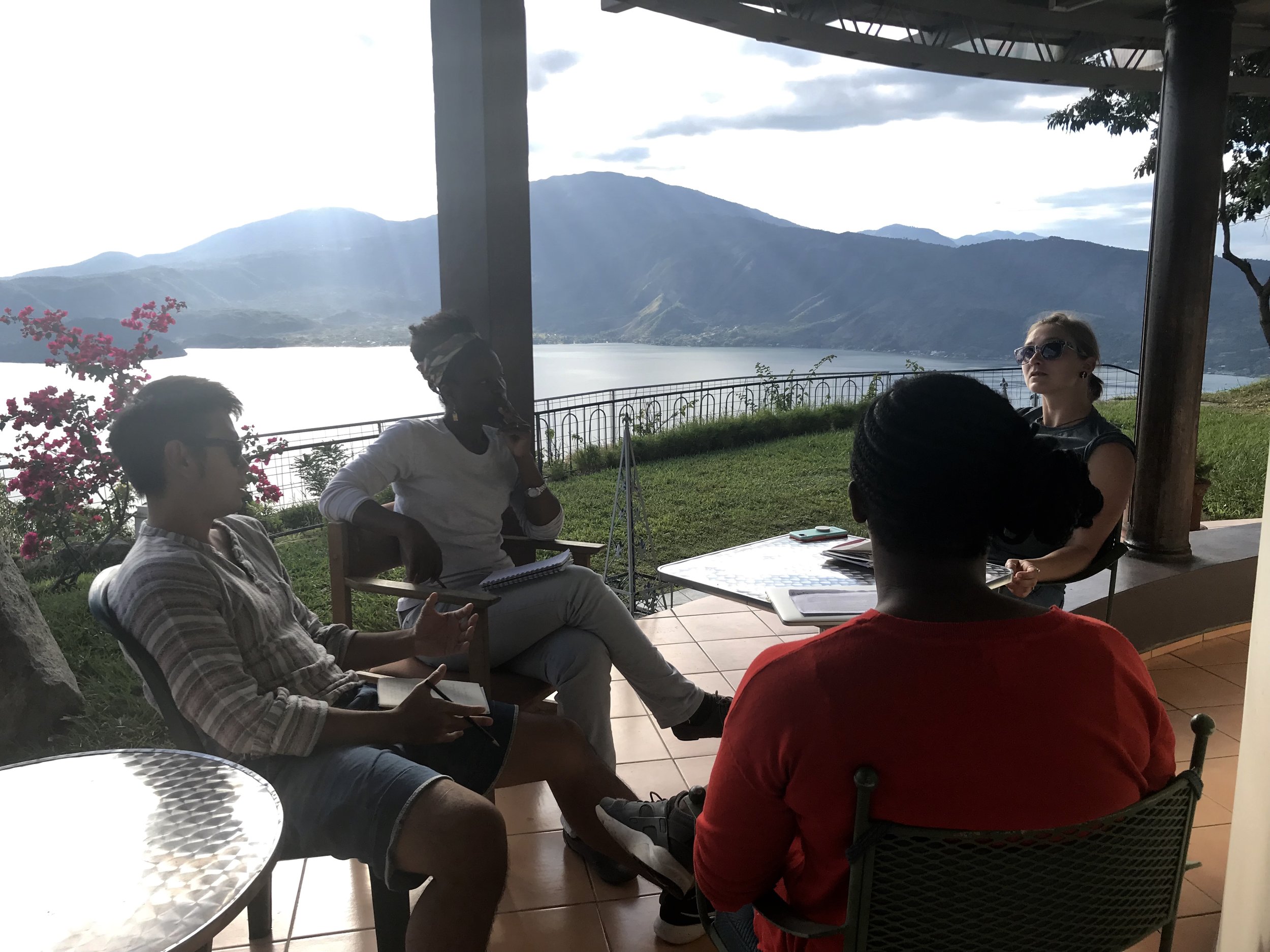Nomad/9 + Laberinto Projects
Laberinto Projects partnered with Nomad/9, an interdisciplinary low-residency MFA at Hartford Art School, as a host site for the program. The program focuses on sustainable culture and cross-disciplinary art practices. During our inaugural site visit during fall 2017 we hosted 16 students from five countries in El Salvador to learn in various educational modalities, including participation in artists’ projects, a back strap weaving course, seminar discussions, site visits and critiques of student work.
Curriculum
With a high-impact curriculum that includes ecology, history and culture, and the craft-to-code technology continuum, the Laberinto and Nomad/9 MFA curriculum offers artists a revolutionary new way of engaging with their home community and other communities across the Americas, while preparing to address today’s most pressing cultural and social issues through their work. Laberinto Projects is proud to be the first overseas site for this singular MFA program, dedicated to regenerative culture and built for the 21st century with dynamic, cross-disciplinary, experiential coursework at sites throughout the Americas, including El Salvador, New York City, Oakland, CA.
Art and Place Reconsidered
"Art and Place, Reconsidered” was led by Muriel Hasbun, and addresses cultural memory, decolonization, identity, trauma and representation through contemporary art.
TechnoLab
“TechnoLab” was a hands-on weaving workshop with three of the remaining seven master back strap weavers of El Salvador. Facilitated by Caroline Lacey, the course was taught by Madeline Imberton, Margarita Laínez, Carmen Vega, Claudia Vega, and Ronald Vega.
Critique Exchange/MFA Projects
“Critique Exchange/MFA Projects” gave students time to respond to each others’ latest work, with insight from Nomad/9 mentors Mary Mattingly and Christy Gast.
Distinguished Practitioner
The “Distinguished Practitioner” class was taught by Muriel Hasbun. In this course, students learned about Hasbun’s artistic practice, about her archival efforts “against silence and forgetting” and about Laberinto Projects. Students built upon the experience of the residency to imagine together the power of the Laberinto archive as a site of creative, healing and educational potential.


